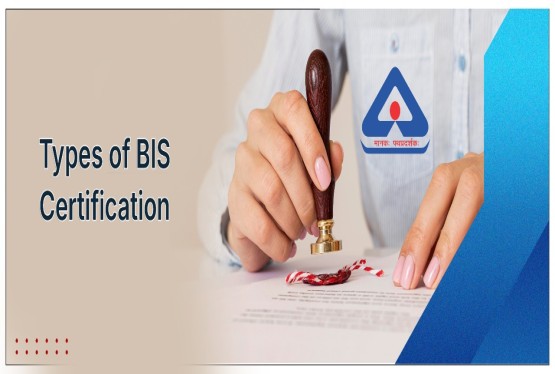Mobile phones are not just a communication tools it is also used for various other. They now serve as essential business assets, helping manage client interactions, streamline operations, and conduct financial transactions. Despite their importance, many businesses and professionals overlook a key tax advantage: claiming Depreciation on Mobile as per the Income Tax Act. Understanding how to account for mobile phones correctly allows businesses to reduce taxable income, plan taxes more efficiently, and stay compliant with regulations. This article will explain in detail the rules, rates, compliance procedures, and common mistakes associated with claiming depreciation on mobile devices.
What is Depreciation in Taxation?
Depreciation in taxation refers to the gradual decline in the value of an asset due to regular wear and tear, obsolescence, or prolonged use. It represents the decrease in the asset’s worth over time. For tax purposes, businesses can treat depreciation as an expense, thereby reducing their taxable profits and ultimately their tax liability. Mobile phones, when used in business operations, qualify as depreciable assets, specifically categorized under "Plant and Machinery". Recognizing Depreciation on Mobile in accounting records helps businesses to reflect a more accurate financial position while availing tax benefits.
Depreciation on Mobile as Per the Income Tax Act
Under the Income Tax Act, the Mobile Phone Depreciation Rate is clearly defined. Mobile phones are treated as "Plant and Machinery," and the prescribed depreciation rate is 15% per annum. This depreciation is calculated using the Written Down Value (WDV) method. According to the WDV method, depreciation is applied to the reduced value of the asset each year, meaning the base for depreciation decreases over time. Thus, the benefit a business gets from depreciation also gradually declines year after year.
For example, if a company purchases a mobile for Rs. 50,000, the depreciation for the first year would be 15% of Rs. 50,000, which equals Rs. 7,500. In the second year, the 15% depreciation would apply on the reduced value of Rs. 42,500.
Latest Updates on Depreciation on Mobile as Per the Income Tax Act
There have been important clarifications in recent times concerning Depreciation on Mobile. The most significant update states that depreciation can only be claimed if the mobile is used solely for business purposes. Personal-use phones are not eligible for any depreciation benefit. The Income Tax Department has tightened compliance checks and auditors now verify whether the mobile phone usage is exclusive to business operations. Therefore, it is essential for businesses to maintain proper purchase documentation, record business usage diligently, and ensure that mobile phones are categorized appropriately in the balance sheet.
Importantly, the Mobile Phone Depreciation Rate of 15% remains unchanged despite these stricter compliance measures.
How to Claim Depreciation on Mobile Phones?
Claiming Depreciation on Mobile requires a structured approach. The mobile phone must be purchased in the name of the business entity, not in an individual’s name. This is a fundamental requirement. Once purchased, the mobile phone should be recorded under "Fixed Assets" in the business’s accounting records. The next step involves applying the correct depreciation rate, which is 15% under the WDV method. At the time of filing the Income Tax Return (ITR), depreciation must be entered under the 'Depreciation on Assets' section. It is vital to preserve purchase invoices, warranty documents, and records indicating business use to justify the claim during any audits.
Methods of Depreciation Calculation
There are two primary methods to calculate depreciation:
Straight-Line Method (SLM)
Under the SLM method, the asset’s cost is evenly spread across its useful life. The formula is:
(Cost of Asset − Residual Value) / Useful Life of Asset
However, for tax purposes related to mobile phones under the Income Tax Act, the Straight-Line Method is not applicable. Businesses must instead use the Written Down Value method.
Written Down Value (WDV) Method
The WDV method is the prescribed method for taxation. Here, depreciation is calculated as:
Depreciation = Book Value × Depreciation Rate
Each year, the depreciation is charged on the reduced value of the asset. For example, if a mobile costing Rs. 50,000 is depreciated at 15%, the first year's depreciation would be Rs. 7,500. The next year, depreciation would be on Rs. 42,500, and so on.
Impact of Depreciation on Tax Liability
Properly claiming Depreciation on Mobile can significantly lower a business’s tax burden. By deducting depreciation expenses from their gross income, businesses reduce their taxable profits, leading to lower tax payments. Additionally, claiming depreciation encourages businesses to periodically upgrade their assets, including mobile phones, thereby ensuring they remain technologically competitive while availing tax advantages.
Depreciation on Mobile: Exemption Criteria
Not every mobile phone qualifies for depreciation claims. The following conditions must be met:
-
The mobile phone must be used solely for business activities.
-
It must be purchased in the business’s name and properly recorded as a fixed asset.
-
Mobiles given as gifts, donated, or not properly accounted for cannot be depreciated.
-
If a mobile is sold within the same financial year, depreciation cannot be claimed on it.
Understanding these exemption criteria is essential to correctly claim Depreciation on Mobile and avoid complications during tax assessments.
Common Errors in Depreciation on Mobile as Per the Income Tax Act
Many businesses unknowingly make mistakes when claiming Depreciation on Mobile. Some of the common errors include:
-
Claiming Depreciation on Personal Phones: Only mobile phones used for business activities qualify. Using the same phone for both personal and business purposes without proper allocation can lead to rejection of the claim.
-
Incorrect Depreciation Rate: Applying a rate other than the specified 15% WDV rate results in inaccurate tax reporting.
-
Lack of Proper Documentation: Failure to maintain purchase invoices and proof of business usage can cause disallowance of the depreciation claim.
-
Claiming Depreciation on Sold Assets: Depreciation should be claimed only if the mobile is still owned by the business at the end of the financial year.
Avoiding these errors ensures smooth processing of depreciation claims and minimizes the risk of penalties.
How to File Depreciation on Mobile in the Income Tax Return?
Filing depreciation in the ITR is a systematic process:
-
Log into the official Income Tax portal (https://www.incometax.gov.in/).
-
Select the appropriate ITR form. Businesses usually use ITR-3, ITR-4, or ITR-6, depending on their category.
-
Under the 'Balance Sheet' section of the form, enter depreciation details accurately.
-
Attach supporting documents if prompted.
-
Review and verify all entries before submitting the ITR.
-
Submit the ITR before the due date to avoid penalties.
Following this process ensures that the claim for Depreciation on Mobile is properly recognized by the tax authorities.
Mobile Phone Depreciation Rate under the Companies Act, 2013
Apart from the Income Tax Act, companies must also record depreciation on mobiles according to the Companies Act, 2013. As per Schedule II of the Companies Act:
-
The WDV rate is 13.91%.
-
The SLM rate is 4.75%.
If a mobile phone is purchased on or after 1st April 2014, it must be capitalized in the company books. Mobiles purchased before 31st March 2014 must be capitalized if the purchase value exceeds Rs. 5,000.
In case of companies involved in power generation or distribution, there is an option to choose either SLM or WDV method for depreciation.
Depreciation Calculator for Mobile Phones
Calculating depreciation manually can be tedious. Online calculators simplify the process. To use one:
-
Enter the original cost of the mobile phone.
-
Input the salvage/residual value percentage.
-
Select the depreciation method (SLM or WDV).
-
Enter the useful life of the asset.
The tool will provide a detailed breakdown showing the depreciation timeline, including opening value, annual depreciation, and closing value for each year of the asset’s life.
Example of Mobile Phone Depreciation
Let’s consider ABC Company Pvt. Ltd. purchasing two mobiles for Rs. 20,000 each, totaling Rs. 40,000.
Straight-Line Method (SLM) Calculation:
|
Year |
Opening Value |
Depreciation (4.75%) |
Accumulated Depreciation |
Book Value |
|
2023-24 |
40,000 |
1,900 |
1,900 |
38,100 |
|
2024-25 |
40,000 |
1,900 |
3,800 |
36,200 |
Written Down Value (WDV) Method Calculation:
|
Year |
Opening Value |
Depreciation (13.91%) |
Accumulated Depreciation |
Book Value |
|
2023-24 |
40,000 |
5,564 |
5,564 |
34,436 |
|
2024-25 |
34,436 |
4,790 |
10,354 |
29,646 |
As shown above, under WDV, depreciation charges are higher initially and decrease over time.
Conclusion
Properly understanding and applying Depreciation on Mobile helps businesses not only save taxes but also maintain accurate financial records. With mobile phones being integral to business operations today, claiming the rightful depreciation becomes an important aspect of tax planning. The Mobile Phone Depreciation Rate under the Income Tax Act is 15% via the WDV method, while under the Companies Act, companies have the choice between 13.91% WDV or 4.75% SLM. It is essential for businesses to ensure proper documentation, correct classification, and compliance with all regulations. Avoiding common errors and timely filing of accurate information in the ITR ensures smooth processing and maximization of tax benefits. Staying updated with rules under both the Income Tax Act and Companies Act can help businesses remain financially healthy, legally compliant, and tax-efficient.
FAQs
Q1. What exactly is depreciation when it comes to mobile phones?
Ans. Depreciation, in the context of mobile phones, refers to the decrease in the phone's value over time. This happens due to factors like wear and tear from use, the introduction of newer and more advanced phone models in the market, and shifting consumer preferences. Unlike some assets that might appreciate, mobile phones typically lose value quite rapidly, often starting immediately after purchase.
Q2. Why do mobile phones depreciate in value so quickly?
Ans. Several key factors contribute to the fast depreciation of mobile phones. Firstly, the rapid pace of technological upgrades means new phones with better features are launched frequently, making older models seem outdated. Secondly, brand reputation plays a role; for instance, iPhones tend to hold their value better than many Android phones due to strong brand loyalty and longer software support. Physical condition is also crucial – damage like cracks and scratches significantly lowers resale value. Furthermore, the availability of software updates impacts a phone's desirability, and finally, general market demand and consumer trends can influence how much a phone is worth over time.
Q3. How is the depreciation of a mobile phone typically calculated?
Ans. There are a few common ways to think about depreciation. The simplest is the straight-line method, where the cost is evenly divided over the phone's expected lifespan. For example, a Rs.60,000 phone expected to last three years would depreciate by Rs.20,000 each year. A more realistic approach is the declining balance method, which recognizes that phones lose value faster initially by applying a fixed percentage reduction each year. Lastly, the market-based approach involves checking the current selling prices of similar used phones on platforms like OLX or Cashify to get a real-world estimate of depreciation.
Q4. Why is it important to understand mobile phone depreciation?
Ans. Understanding depreciation can lead to smarter financial decisions. It helps you decide if paying a premium for a brand that holds its value better is worthwhile in the long run. It also informs the best time to upgrade and sell your old phone to maximize its value. For businesses providing phones, it's essential for accounting and tax purposes. Additionally, being aware of depreciation can encourage more responsible usage and potentially reduce electronic waste by prompting consumers to choose devices that remain functional and valuable for longer.
Q5. What are some ways I can slow down the depreciation of my mobile phone?
Ans. While you can't prevent depreciation entirely, you can take steps to slow it down. Using a good quality case and screen protector is crucial for preventing physical damage, which is a major factor in value loss. Keeping the original box and accessories can also increase resale value. Avoiding unauthorized repairs ensures the phone retains its integrity. Finally, regularly updating the software keeps the phone secure and efficient, making it more appealing to potential buyers down the line.












































































_crop10_thumb.jpg)







_Rules,_2025_learn_crop10_thumb.jpg)
























































































_crop10_thumb.jpg)








 in BIS FMCS_learn_crop10_thumb.jpg)










_crop10_thumb.jpg)




